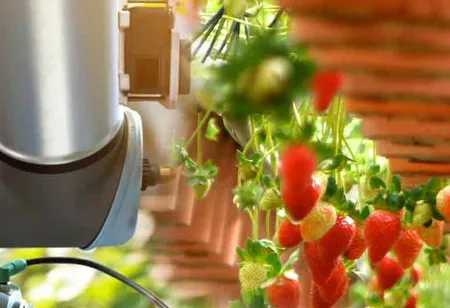Thank you for Subscribing to Agri Business Review Weekly Brief
The Future of Genetically Modified Organisms
Individuals in the field of biotechnology have been modifying the genomes of animals and plants with the use of traditional breeding techniques for many years.

By
Agri Business Review | Monday, May 22, 2023
Stay ahead of the industry with exclusive feature stories on the top companies, expert insights and the latest news delivered straight to your inbox. Subscribe today.
Genetic engineering has enabled individuals to introduce desirable traits into different species and therefore has allowed for the optimisation of agricultural performance.
FREMONT, CA: Individuals in the field of biotechnology have been modifying the genomes of animals and plants with the use of traditional breeding techniques for many years. The artificial selection of certain, desirable traits has resulted in many different types of organisations which belong on a wide spectrum, ranging from sweet corn to hairless felines. However, artificial selection, in which organisms offering certain traits are picked to breed consequent generations, is restricted to naturally occurring variants.
Over the recent decades, developments in the field of genetic engineering have enabled accurate control over the changes in genetics given to an organism. Fast forward to the present day, we can integrate the new traits from a specific species into a completely different, unrelated species by means of genetic engineering, which allows for the optimisation of agricultural performance or facilitates the production of vital pharmaceutical drugs. Some of the prominent examples of genetically engineered organisms include farm animals, crop plants, and soil bacteria.
The Use of GMOs
Agricultural plants are one of the most often given examples of genetically modified organisms (GMOs). Some of the advantages of genetic engineering in agriculture are an increase in crop yields, decreased production costs for food or drugs, reduced requirements for pesticides, improved nutrient composition as well as food quality, increased resistance to pests and diseases, improved food security, and medical benefits to the population of the world. There have also been developments in growing crops that mature quickly and have the tolerance for boron, salt, aluminium, frost, drought, and other environmental stressors, which enables plants to grow in favourable conditions, without which the plants may not flourish.
Some other applications consist of the production of non-protein or non-industrial products. There are animals also who have been genetically modified to improve yield and decrease susceptibility to diseases.
The pharmaceutical industry also makes use of GMOs. In 1986, the human growth hormone was the first protein pharmaceutical produced in plants, and in the year 1989, the production of the first-ever antibody took place. The research groups in both cases used tobacco, and as of 2003, numerous different types of antibodies generated in plants had reached the doorsteps of clinical trials. Transgenic animals are also bred to carry human genes or mutations in specific genes, enabling the study of the progression and genetic determinants for multiple diseases.
Plausible Applications for GMOs
Numerous companies benefit from the research conducted on GMOs. For example, innumerable microorganisms are being considered for clean fuel producers in the future. In addition, the genetic modification of plants may be used to produce recombinant vaccines. The concept of the oral vaccine as expressed in plants for consumption by human beings is currently being evaluated as one of the potential solutions to the spread of various diseases in underdeveloped countries, and these would significantly decrease the costs associated with conducting large-scale vaccination campaigns.





